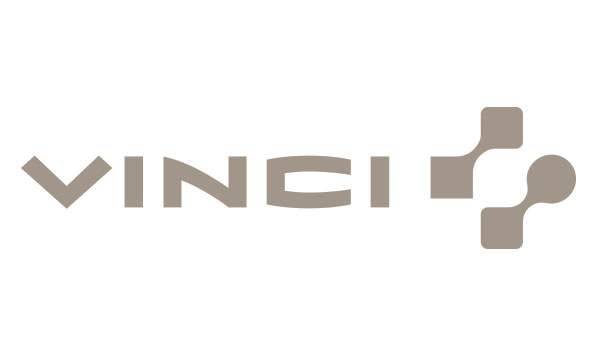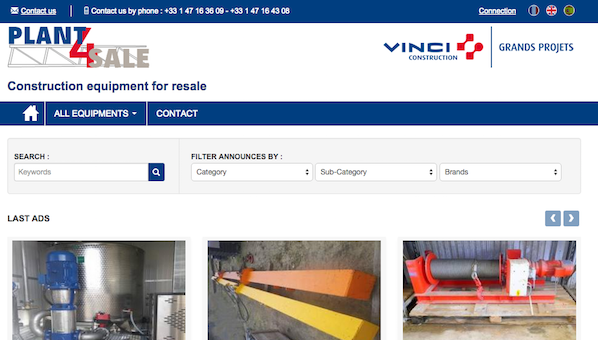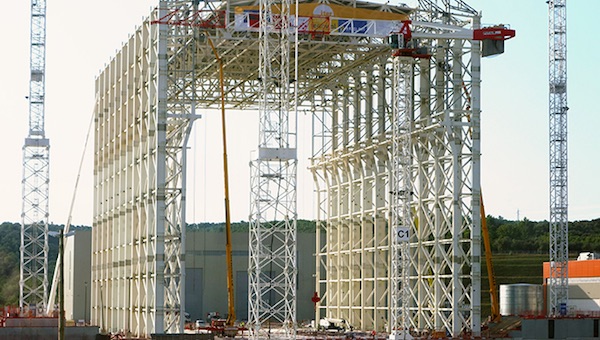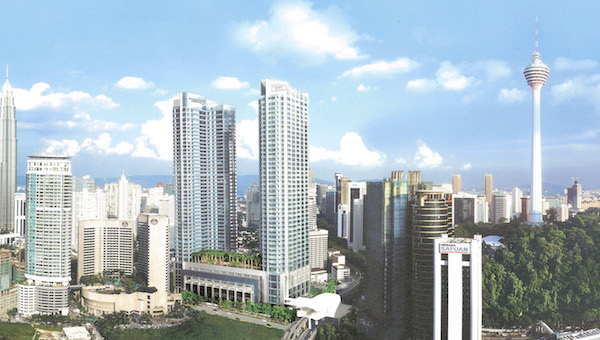“I have just learned that Pierre Berger passed away suddenly last night. On behalf of the VINCI Group and in a personal capacity, I wish to extend my heartfelt condolences to Pierre’s family and friends and to the 70,000 Eiffage employees. As he demonstrated during the years he spent with the VINCI Group, Pierre was a man of exceptional energy who was driven by a passion for our business activities that is the hallmark of an outstanding leader.”
You can go to www.vinci-construction-projects-plant4sale.com. (available in French, English and Spanish languages) and look for plant or equipment with a search engine tool detecting key word, kind of plant or manufacturer’s brand. The current location of the equipment and its number of hours of use are mentioned in the classified advertisements. You will find there as well the contact details of our Plant & Equipment Division for further information.
This steel structure, weighing 800 tonnes, was pre-assembled on the ground and then lifted, with the help of strand jacks, to a height of 50 metres. The construction of this assembly hall and of the building that will house the future Tokamak reactor form part of contract TB03, which is being implemented by a consortium led by VINCI (58.3%, with VINCI Construction Grands Projets, VINCI Construction France and Dodin Campenon Bernard), working together with Spanish construction company Ferrovial Agroman (30%) and Razel-Bec (Fayat, 11.7%).
The big lift: www.iter.org/video/328
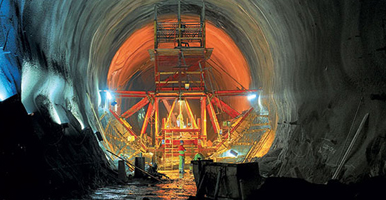
The ceremony was attended by Mr. Mikael Damberg, Sweden’s Minister for Enterprise and Innovation, Mrs. Lena Erixon, Swedish Transport Administration Director General and Mr. Alain Bonnot, VINCI Construction Grands Projets Chairman.
The tunnels are the country’s most important railway infrastructure project in 40 years. It took 10 years and an investment of €850 million to complete them.
The project was initiated in 1970 but did not effectively get under way until 2004, following two failed attempts by other companies to build them. VINCI Construction Grands Projets and its Swedish partner Skanska were the first to succeed in boring through a complex geological formation to construct two parallel tunnels with a unit length of nearly 5,500 metres and an interior diameter of about 9 metres.
The Hallandsås tunnels are part of the national refurbishment program of the Malmö-Gothenburg railway line. The new line will make a strong contribution to opening up the economy of western Sweden. When the line officially inaugurated today is opened to traffic on 15 December, its capacity will increase from 4 to 24 trains per day, travel time between Malmö and Gothenburg will be shortened and the load capacity of freight trains will double.
The project introduced one-of-a-kind environmental management measures. A broad-based ecological management programme was applied to protect water and the local ecology as a whole. The County Administrative Board, the environmental assessment group and the neighbouring Båstad and Ängelholm municipalities also continuously monitored construction.
With its worldwide recognised transport infrastructure expertise, VINCI is a global company able to support public authorities’ railway infrastructure projects. Over the past 20 years, VINCI has bored some 900 km of tunnels. It is currently operating 10 large tunnel boring machines around the world on projects that include the major Lee Tunnel project in London designed to clean up the Thames; Line 3 of the Cairo metro; and 13.8 km of tunnels to connect the Doha airport with the historic centre of the capital of Qatar, on which five tunnel boring machines are working simultaneously.
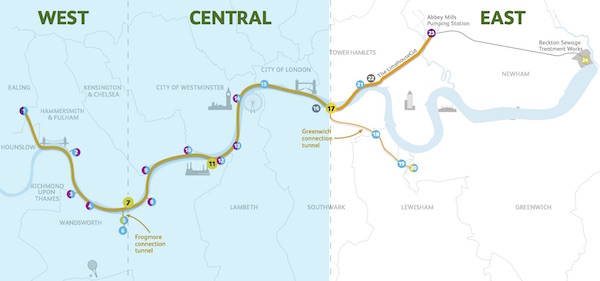
The works package includes the construction of two sections of tunnel, a main tunnel (5.5 km) and a connecting tunnel (4.6 km) for combined rainwater and wastewater to the east of London. Located between 45 and 65 metres below ground, the two tunnels will be excavated using slurry pressure balance tunnel boring machines. The main tunnel will have an interior diameter of 7.20 metres, while that of the connecting tunnel will be 5 metres. The East section also includes the construction of five large shafts (diameters of between 17 and 25 metres), maritime works on the Thames, structures connecting with the existing wastewater collection system and electromechanical works packages.
A project optimisation phase (design, methods, etc.) is starting immediately. The launch of works on the site is planned for 2016, with delivery scheduled for 2023.
The East works package is one of three making up the Thames Tideway Tunnel, a programme that calls for the construction of a total of 25 km of tunnels. The Thames Tideway Tunnel is urgently needed to help tackle the issue of discharges of untreated sewage into the tidal River Thames and ensure that London’s sewerage system is fit for the 21st century.
This contract follows on from that for the Lee Tunnel, which VINCI Construction Grands Projets and Bachy Soletanche started building to the east of London in January 2010.
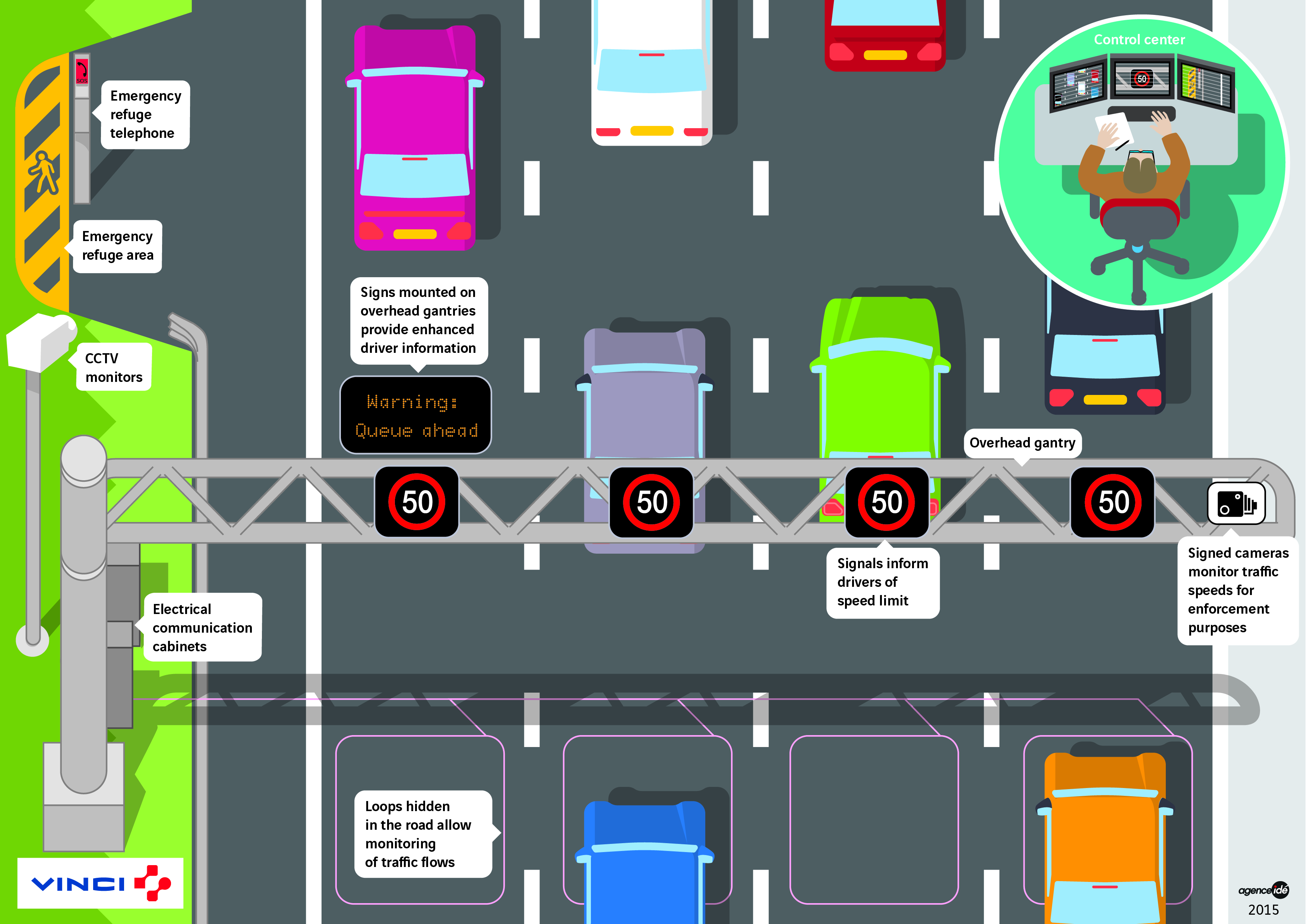
This first contract, with a value of €65 million, is part of the Smart Motorways Programme (SMP) introduced by Highways England. It is designed to add extra capacity on around 18 km M5 motorway section between junctions 4A and 6 from 3 to 4 lanes by making smart use of the hard shoulder. The project also includes real-time management of traffic flows according to traffic density. Sensors send information to a control centre that is able to modulate speed limits via dynamic signage. The improved traffic flow will benefit thousands of motorists per day.
The works package (package 1) also includes two other projects to be carried out during the coming five-year period (the M6 motorway between junctions 2 and 4, and the M4 between junctions 3 and 12). Subject to statutory approval and continued value for money, the M6 is expected to start work in 2017/18 and the M4 scheme in 2016/17 at an estimated combined value of up to €803 million. Final target costs for these contracts will be agreed with Highways England.
“The Group’s employees, SME and ISE partners and subcontractors together performed the feat of completing this gigantic earthworks and civil engineering project in three years of works. The outsized project was a major challenge in terms of organisation, production and management, employing 8,500 people simultaneously at the height of activity. This great success reflects the uncompromising engagement of our construction teams, whom I take this opportunity to commend. The most visible part of the project is now behind us, as we move on to the second stage of the project focused on railway equipment. The success of this second stage is a huge responsibility for VINCI, but it also gives the Group a tremendous opportunity to demonstrate, once again, the power of its integrated concession-construction approach and the vitality of the public private partnership concept. The goal, which we all share, is to meet the target date of 31 July 2017, when the line is scheduled to begin commercial operation,” said Xavier Huillard.
VINCI offers acknowledged expertise in complex roadworks. Its track record includes slip road widening at M1 junctions 25 to 28 in the United Kingdom between 2007 and 2010, the East End Crossing motorway section in the U.S. state of Indiana, currently under construction, and the New Coastal Highway on Reunion Island, also under construction.
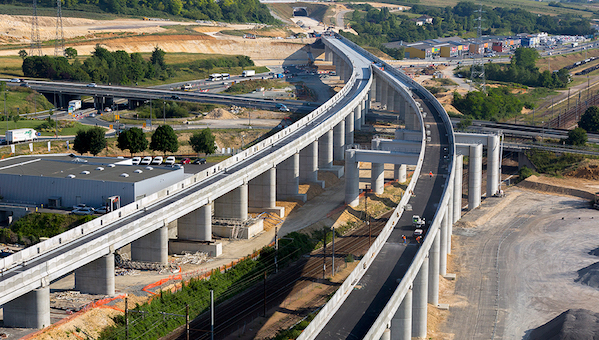
VINCI took the opportunity to commend the performance and engagement of COSEA, the construction joint venture responsible for designing and building the South Europe Atlantic high-speed line, which took only 38 months to complete all earthworks and civil engineering works. Over the three-year period, the construction teams set up a large number of worksites along the alignment to build the 340 km rail infrastructure, 24 viaducts and 500 engineering structures.
The record completion time made it possible to hand over the roadbed ahead of schedule to the teams in charge of installing the rail equipment, who are now progressing at a rate of 2×650 metres of platform per day.
“The Group’s employees, SME and ISE partners and subcontractors together performed the feat of completing this gigantic earthworks and civil engineering project in three years of works. The outsized project was a major challenge in terms of organisation, production and management, employing 8,500 people simultaneously at the height of activity. This great success reflects the uncompromising engagement of our construction teams, whom I take this opportunity to commend. The most visible part of the project is now behind us, as we move on to the second stage of the project focused on railway equipment. The success of this second stage is a huge responsibility for VINCI, but it also gives the Group a tremendous opportunity to demonstrate, once again, the power of its integrated concession-construction approach and the vitality of the public private partnership concept. The goal, which we all share, is to meet the target date of 31 July 2017, when the line is scheduled to begin commercial operation,” said Xavier Huillard.
An exemplar social and environmental project
The project was carried out in consultation and in partnership with the local stakeholders. In environmental terms, the Group’s teams worked day-to-day with non-profit organisations to optimally blend the infrastructure into its environment. They identified more than 220 protected species. In social terms, COSEA, Pôle Emploi (the French job centre) and the local authorities also worked closely together to recruit and train 2,000 local workers, who joined the 6,500 employees of the partner companies. Among other things, this partnership arrangement made it possible to exceed the initial target work integration objective, nearly doubling the number of work integration hours to 4.5 million of the 25 million total hours worked. Three-quarters of the people recruited locally for the infrastructure project were redeployed to the railway project or outplaced, notably via the Fondation COSEA pour Entreprendre (COSEA Enterprise Foundation), which supports business creation. Lastly, the project was exemplary in terms of safety, recording no accidents with serious consequences throughout the 25 million hours worked.
The Tours-Bordeaux high-speed rail line: one of Europe’s largest infrastructure projects
The 340 kilometers line, which includes 40 km of connections to the conventional rail system, represents a total investment of €7.8 billion and constitutes the largest railway sector public private partnership ever signed in France and one of Europe’s largest infrastructure projects.
Following the six years required to design and build it, the line will shorten the travel time between Bordeaux and Paris to two hours and five minutes.
The 50-year concession contract covers financing, design, construction, operation and maintenance of the Tours-Bordeaux SEA HSL. Design and works, under LISEA programme management, were entrusted to the COSEA construction joint venture led by VINCI Construction and also including Eurovia and the VINCI Energy business line, in association with BEC, NGE, TSO, Ineo, INEXIA, Arcadis and Egis Rail. Work got under way in the first half of 2012. The MESEA company, held jointly by shareholders VINCI Concessions (70%) and INEXIA (30%), will be responsible for operating and maintaining the line.
Key figures:
- 340 km and 40 km of connections
- 113 municipalities, 6 French départements, 3 regions
- Around 500 engineering structures, including 24 viaducts
- 8,500 jobs for works companies at the height of activity
- 150 permanent jobs to handle commercial service (operation and maintenance) once construction has been completed
- 20 % of the hours worked on the infrastructure project were part of the work integration scheme
- Mitigation of the impact on the natural environment will involve more than 3,500 hectares of offsets
Video “LGV SEA 2015 – Celebration of the end of the infrastructure works“
This first phase, valued at €76 million, comprises the turnkey construction of a 9-storey podium block and a 46-storey office tower as well as the structural construction of a 48-storey Ritz Carlton residential tower.
The complex will have a total area of 185,000 sq. metres.
Work will begin immediately and take 27 months to complete.
In 2003, VINCI Construction Grands Projets built the 700,000 sq. metre Berjaya Times Square complex, Asia’s largest residential and shopping complex in a single phase, for the same customer in Kuala Lumpur.

Founded more than 40 years ago, HEB Construction is a leader in the New Zealand construction market. The company offers a broad array of expertise in civil engineering, engineering structures, hydraulic engineering, roadworks, earthworks, marine and port works, pre-casting and transport. The company employs 750 people and generated revenue of about €230 million in 2014.
With this acquisition, VINCI confirms its strategy of expanding in the high-growth international markets. New Zealand’s GDP increased by more than 3% in 2014 and the country’s construction and infrastructure sectors hold out prospects for steady growth.
“HEB Construction’s fundamentals form an excellent fit with those of VINCI and its new projects reflect its vitality. One good example is the new contract notification in April of this year to build a 27 km four-lane urban motorway in Wellington. The project, in which HEB is participating as a member of a joint venture, has a value of more than €500 million and is one of the island’s largest current infrastructure projects.”, says Philippe Chavent, Chairman of VINCI Construction International Network*.
*VINCI Construction International Network was set up in 2014 as a network of local subsidiaries with permanent locations to support VINCI Construction’s international expansion. VINCI Construction International Network currently has locations in Africa (via its subsidiary Sogea-Satom, which operates in more than 20 African countries), Overseas France (French West Indies, French Guiana, Reunion Island, Mayotte, New Caledonia) and Central Europe (Poland, Czech Republic, Slovakia). VINCI Construction International Network employs 16,000 people and generated revenue of €2,150 million in 2014.
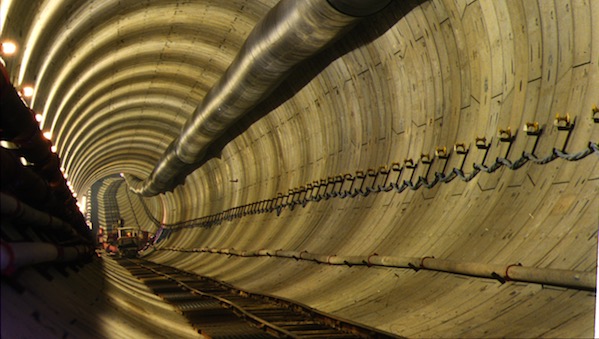
The Egyptian authorities have demonstrated renewed confidence in the joint venture led by VINCI Construction Grands Projets alongside Bouygues Travaux Publics, a Bouygues Construction subsidiary, and their Egyptian partners, Orascom Construction and Arab Contractors, by awarding them the contract for the new phase of civil engineering for Line 3 of the Cairo metro between Haroun and El Nozha stations.
The new phase of works (Phase 4A) continues on from Phase 2, which was brought into service in May 2014 more than six months ahead of schedule. Phase 4A consists of 5.15 km of tunnel and five underground stations on Line 3, the east-west link across the Egyptian capital.
The joint venture has committed to a very short design-build delivery deadline of 34 months based on the experience it has acquired over more than 30 years of working on the metro project, the oldest in Africa, and to a technical innovation. In a first worldwide, earth pressure balance tunnel boring machine Imhotep, used for the previous phase, will be modified to operate as a slurry pressure balance machine. This change will generate savings for the joint venture on both its execution time and budget.
The project, worth €264 million, will employ around 3,200 people, mostly Egyptian.
